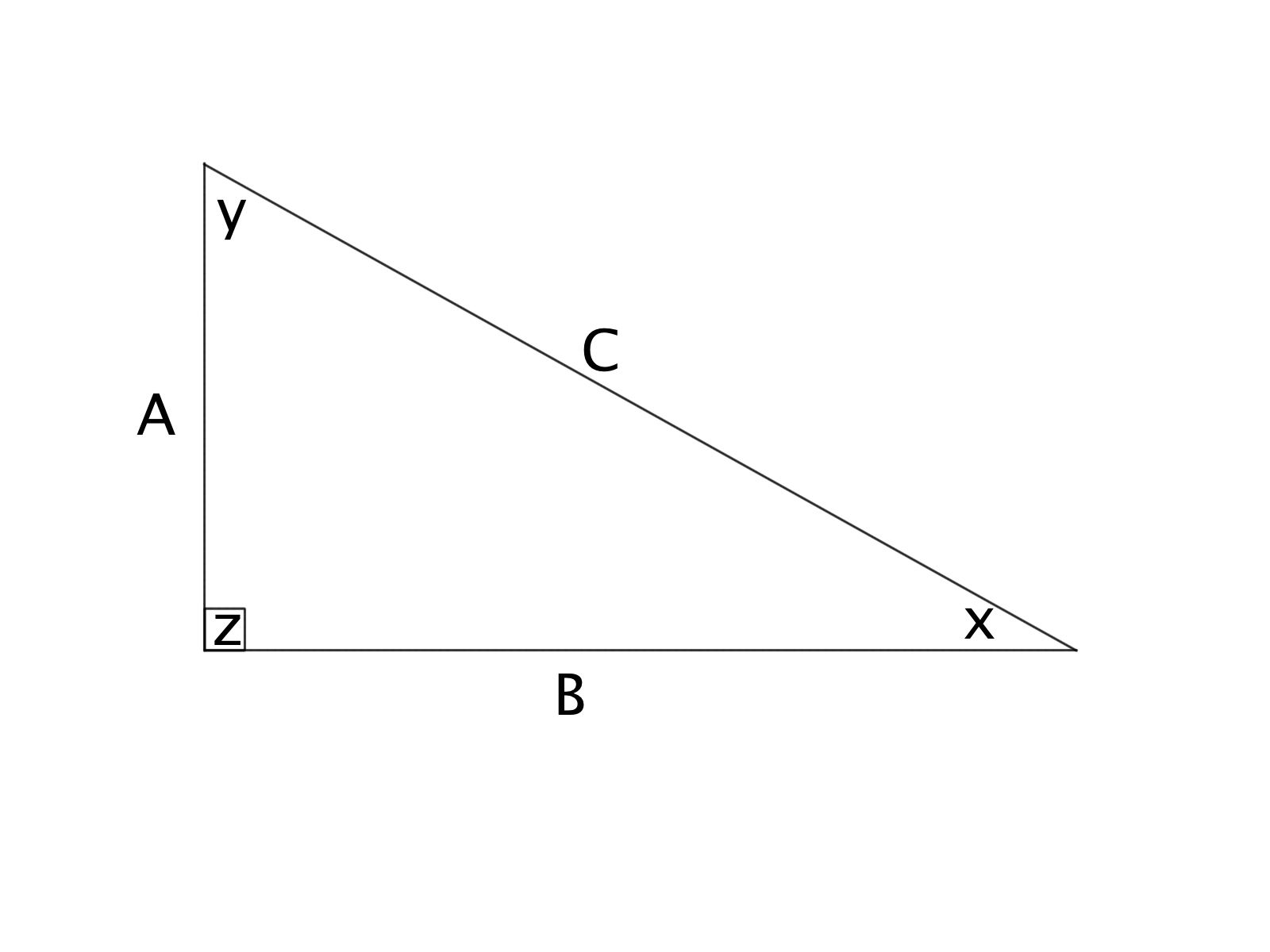All Basic Geometry Resources
Example Questions
Example Question #1 : How To Find The Area Of A Right Triangle

Given:
A = 3 cm
B = 4 cm
What is the area of the right triangle ABC?
7 square centimeters
6 square centimeters
12 square centimeters
5 square centimeters
13 square centimeters
6 square centimeters
The area of a triangle is given by the equation:
Since the base leg of the given triangle is 4 cm, while the height is 3 cm, this gives:
Example Question #2 : How To Find The Area Of A Right Triangle

Given:
A = 4 cm
B = 6 cm
What is the area of the right triangle ABC?
12 square centimeters
10 square centimeters
8 square centimeters
24 square centimeters
11 square centimeters
12 square centimeters
The area of a triangle is given by the equation:
Since the base leg of the given triangle is 4 cm, while the height is 3 cm, this gives:
Example Question #3 : How To Find The Area Of A Right Triangle

Given:
A = 3 cm
B = 7 cm
What is the area of the triangle?
7 square centimeters
7.6 square centimeters
10 square centimeters
10.5 square centimeters
8.3 square centimeters
10.5 square centimeters
The area of a triangle is given by the equation:
Since the base leg of the given triangle is 4 cm, while the height is 3 cm, this gives:
Example Question #4 : How To Find The Area Of A Right Triangle

Given that:
A = 6 cm
B = 10 cm
What is the area of the right trianlge ABC?
16 square centimeters
35 square centimeters
90 square centimeters
60 square centimeters
30 square centimeters
30 square centimeters
The area of a triangle is given by the equation:
Since the base leg of the given triangle is 4 cm, while the height is 3 cm, this gives:
Example Question #3 : How To Find The Area Of A Right Triangle

Given that:
A = 3 cm
B = 4 cm
C = 5 cm
What is the area of the right triangle ABC?
12 square centimeters
6.5 square centimeters
7 square centimeters
6 square centimeters
10 square centimeters
6 square centimeters
The area of a triangle is given by the equation:
Since the base leg of the given triangle is 4 cm, while the height is 3 cm, this gives:
Example Question #1 : How To Find The Area Of A Right Triangle

Given that:
A = 10 cm
B = 20 cm
What is the area of the right triangle ABC?
70 square centimeters
120 square centimeters
100 square centimeters
30 square centimeters
50 square centimeters
100 square centimeters
The area of a triangle is given by the equation:
Since the base leg of the given triangle is 4 cm, while the height is 3 cm, this gives:
Example Question #402 : Triangles
The length of the legs of the triangle below (not to scale) are as follows:



What is the area of the triangle?






The formula for the area of a triangle is
where 

For the triangle shown, side 

Therefore, the area is equal to
or, based on the units given, 42 square centimeters
Example Question #1 : How To Find The Area Of A Right Triangle
An equilateral triangle has a side of 
What is the area of the triangle?
An equilateral triangle has three congruent sides. The area of a triangle is given by 


The equilateral triangle can be broken into two 



Using the Pythagorean Theorem we get 

Example Question #8 : How To Find The Area Of A Right Triangle
The hypotenuse of a 
It is impossible to tell from the information given.
In a 


Example Question #2 : How To Find The Area Of A Right Triangle

All Basic Geometry Resources




































